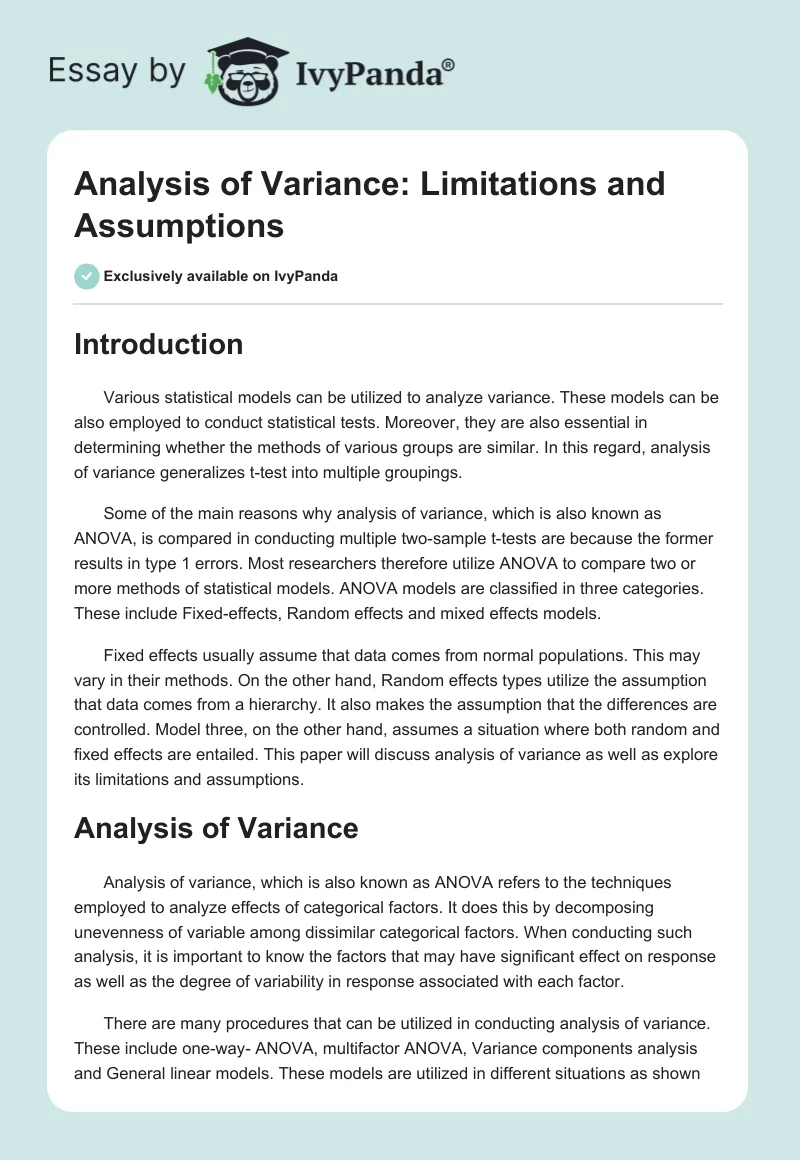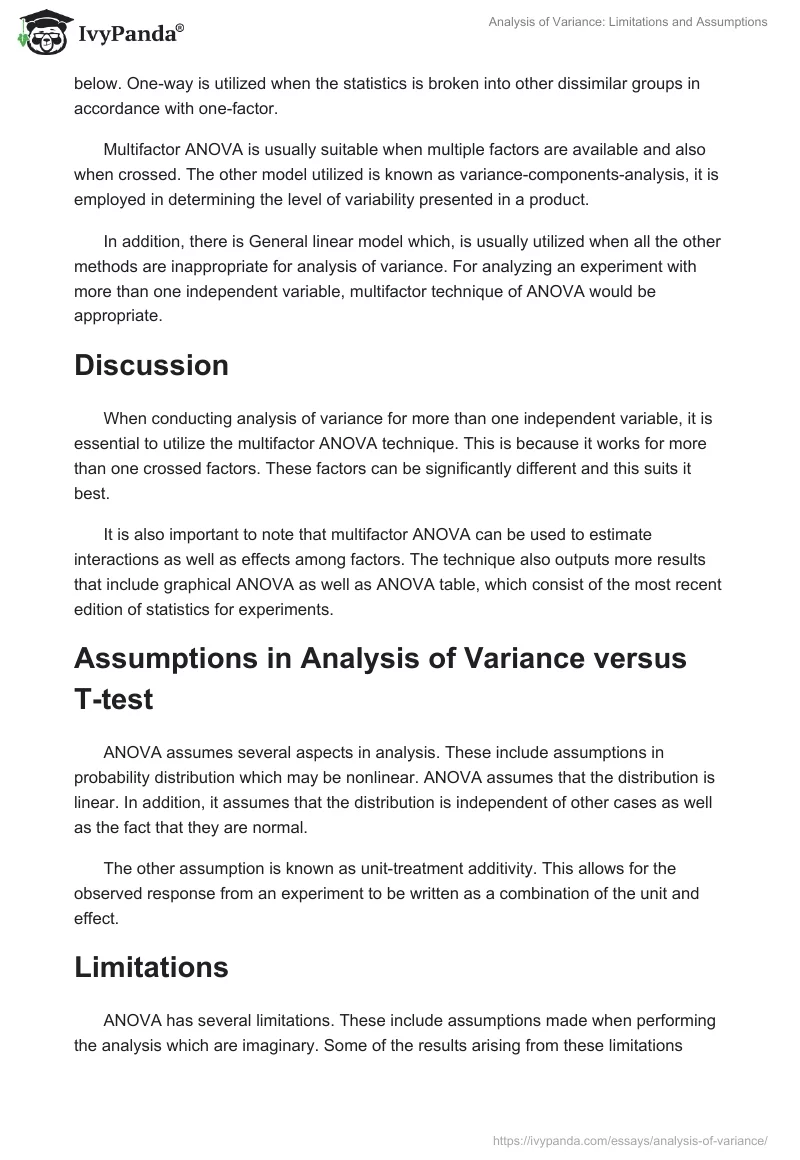Introduction
Various statistical models can be utilized to analyze variance. These models can be also employed to conduct statistical tests. Moreover, they are also essential in determining whether the methods of various groups are similar. In this regard, analysis of variance generalizes t-test into multiple groupings.
Some of the main reasons why analysis of variance, which is also known as ANOVA, is compared in conducting multiple two-sample t-tests are because the former results in type 1 errors. Most researchers therefore utilize ANOVA to compare two or more methods of statistical models. ANOVA models are classified in three categories. These include Fixed-effects, Random effects and mixed effects models.
Fixed effects usually assume that data comes from normal populations. This may vary in their methods. On the other hand, Random effects types utilize the assumption that data comes from a hierarchy. It also makes the assumption that the differences are controlled. Model three, on the other hand, assumes a situation where both random and fixed effects are entailed. This paper will discuss analysis of variance as well as explore its limitations and assumptions.
Analysis of Variance
Analysis of variance, which is also known as ANOVA refers to the techniques employed to analyze effects of categorical factors. It does this by decomposing unevenness of variable among dissimilar categorical factors. When conducting such analysis, it is important to know the factors that may have significant effect on response as well as the degree of variability in response associated with each factor.
There are many procedures that can be utilized in conducting analysis of variance. These include one-way- ANOVA, multifactor ANOVA, Variance components analysis and General linear models. These models are utilized in different situations as shown below. One-way is utilized when the statistics is broken into other dissimilar groups in accordance with one-factor.
Multifactor ANOVA is usually suitable when multiple factors are available and also when crossed. The other model utilized is known as variance-components-analysis, it is employed in determining the level of variability presented in a product.
In addition, there is General linear model which, is usually utilized when all the other methods are inappropriate for analysis of variance. For analyzing an experiment with more than one independent variable, multifactor technique of ANOVA would be appropriate.
Discussion
When conducting analysis of variance for more than one independent variable, it is essential to utilize the multifactor ANOVA technique. This is because it works for more than one crossed factors. These factors can be significantly different and this suits it best.
It is also important to note that multifactor ANOVA can be used to estimate interactions as well as effects among factors. The technique also outputs more results that include graphical ANOVA as well as ANOVA table, which consist of the most recent edition of statistics for experiments.
Assumptions in Analysis of Variance versus T-test
ANOVA assumes several aspects in analysis. These include assumptions in probability distribution which may be nonlinear. ANOVA assumes that the distribution is linear. In addition, it assumes that the distribution is independent of other cases as well as the fact that they are normal.
The other assumption is known as unit-treatment additivity. This allows for the observed response from an experiment to be written as a combination of the unit and effect.
Limitations
ANOVA has several limitations. These include assumptions made when performing the analysis which are imaginary. Some of the results arising from these limitations include type 1 errors. In most cases, it is usually important to perform follow-up tests to control type 1 errors, among others.
These sequels can be done before (planned) or after (post hoc) checking data. The former are usually conducted before checking data, while post hoc is conducted after checking the data. Performing T-test, which is a type of post hoc tests usually assist in controlling type 1 errors.
Conclusion
Analysis of variance, which is also known as ANOVA refers to the techniques employed to analyze effects of categorical factors. These techniques are many and vary depending on their need. They include one-way- ANOVA, multifactor ANOVA, Variance components analysis and General linear models.
When analyzing more than one independent variable, it is more convenient to use the multifactor ANOVA as it provides for both independent and crossed factors.


